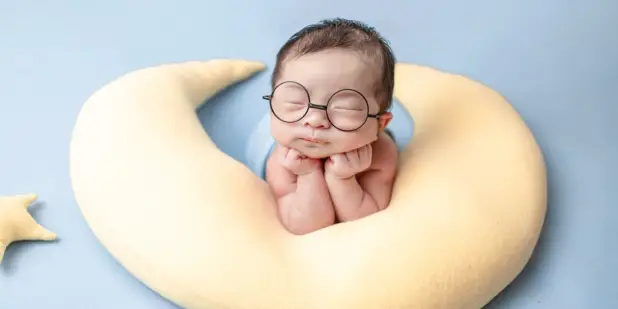Certification of Children's Products
With an EAC Certificate for children's products, children's clothing, and children's shoes, the manufacturer is confirmed that the children's products made from textiles, leather, and other materials for babies (up to 1 year), children (1 to 14 years), and adolescents (14 to 18 years) comply with the uniform regulations of the Eurasian Economic Union (EAEU).
The EAC Certification of children's products is carried out in accordance with the regulations of the Technical Regulation of the Eurasian Economic Union TR CU 007/2011 - Safety of Products for Babies, Children, and Adolescents. The Eurasian Economic Union (EAEU member states) is the free trade zone between Russia, Kazakhstan, Belarus, Kyrgyzstan, and Armenia.
Certification can be confirmed in three forms depending on the type of product:
- EAC Certificate
- EAC Declaration
- State Registration
To particularly protect the health of children and adolescents, a special Technical Regulation has been developed by the Economic Commission of the EAEU member states, which establishes the safety requirements for children's products.
The Technical Regulation TR CU 007/2011 – Safety of Products for Children and Adolescents describes the standards and technical criteria, such as mechanical, biological, thermal, and chemical safety and compliance with mandatory regulations in Russia and EAEU states.
Furthermore, the Technical Regulation contains the requirements for the production, labeling, use, storage, and disposal of children's products. In our Downloads section, you will find the option to download the original regulation TR CU 007/2011 – Safety of Products for Children and Adolescents.
TR CU 007/2011 – Safety of Children's Products
The Technical Regulation TR CU 007/2011 on the safety of products for children and adolescents was adopted on 23.08.2011 and came into force on 01.07.12.
The directive applies to all finished products intended for circulation in the customs territory of all EAEU states and for use by children and adolescents.
The Technical Regulation TR CU 007/2011 applies to the following product groups:
- Children's clothing and products made from textile materials
- Outerwear, e.g., jackets, pants, dresses, shirts, skirts, shorts
- Underwear and diapers, e.g., pajamas, undershirts, pampers
- Bedding, such as bed covers, blankets, and pillows
- Bathing items, e.g., swim trunks and swimsuits
- Textile and leather products
- Children's shoes and leather goods for children
- Children's books and children's magazines
- Strollers and children's bicycles
- Fashion accessories for children
- School stationery
As well as care products for children, such as:
- Children's hygiene products, such as toothbrushes
- Rubber, latex, or silicone pacifiers
- Dishes and cutlery for children
The Technical Regulation TR CU 007/2011 does not apply to the following product groups:
- Medical products or products intended for medical purposes
- Food for children and babies, e.g., baby food
- Custom-made products or products made to order
- Teaching aids, textbooks, and e-learning materials
- Toys, card games, and board games
- Sports equipment and sporting goods
- Cosmetics
- Children's furniture
- Perfume
EAC Certificate according to TR CU 007/2011
According to the regulations of Technical Regulations, the following products are subject to certification:
- Hygiene products for children's care made of plastic and metal
- Hygiene products for children's care made of rubber
- Outerwear for children up to 1 year
- Fur clothing for children up to 1 year
- Headgear for children up to 1 year
- Shoes, except wool shoes
- Outerwear
- Underwear and socks
- Strollers and bicycles
- Bedding
The data on certified products is stored in a unified register of the certification authority. The EAC Certificate is valid for 1 to 5 years.
EAC Certification Scheme for Products for Children and Adolescents:
- 1C, 2C: EAC certification for series delivery
- 3C, 4C: EAC certification for single delivery
Scheme 1C includes an inspection control and a production audit. Scheme 2C includes an inspection control and the control of the quality management system. Schemes 3C and 4C are applied for EAC certification of single deliveries.
EAC Declaration according to TR CU 007/2011
According to the regulations of Technical Regulations, the following products are subject to EAC declaration:
- Clothing for children from 1 year and adolescents from 14 to 18 years
- Winter headgear made of fabric and fur for children from 1 year
- Children's shoes made of wool
- Children's books and magazines
- School stationery
- Leather products
- Bedding
The data on declared products is stored in a unified register of the certification authority. The validity of an EAC declaration is from 1 to 5 years.
State Registration according to TR CU 007/2011
According to the regulations of Technical Regulations, the following products are subject to SGR registration:
- Pacifiers, rubber crawlers, and similar products for children up to 3 years
- Hygienic disposable products, e.g., Pampers and cotton swabs
- Summer headgear for children up to 3 years
- Cutlery and dishes for children up to 3 years
- Pacifiers made of latex, rubber, or silicone
- Underwear and socks for children up to 3 years
- Children's toothbrushes
The data on registered products is stored in a unified register of the certification authority. The state registration is valid for 1 to 5 years.
Process of EAC Certification of Children's Products
The EAC certification of children's products, children's clothing, and children's shoes is conducted based on product descriptions, product samples, and test protocols from accredited certification organizations.
The following documents are required for certification, if possible:
- Detailed product description
- Information about the manufacturer and importer
- Information about product composition
- Information about the materials and accessories used
- Information about the packaging
- Internal and external test protocols
- Customs tariff number
- Existing certificates such as GOST, EAC, or CE
- Additionally, further documents may be required in certain cases.
EAC Marking of Children's Products
Products that receive an EAC certificate or an EAC declaration are marked with an EAC sign of the EAEU states. The EAC marking confirms EAC compliance with the technical standards of the Eurasian Economic Union.
The EAC marking must be clearly legible. The EAC marking itself must be affixed directly to the product or to the corresponding shipping documents.
EAC marking for children's products, children's clothing, and children's shoes must include the following details and information:
- Product designation
- EAC marking
- Intended use of the product
- Manufacturing date of the product
- Country of origin
- Product shelf life
- Name of the manufacturer
- Address of the manufacturer
Authorized Representation for EAC Certification
The relevant information must be printed in Russian or in the official language of the member state of the Eurasian Economic Union, into which the products are imported. Designations such as "orthopedic," "environmentally friendly," etc., may not be used without appropriate evidence.
The EAC marking of dishes must include both the information about the material from which the product is made and appropriate usage instructions. The EAC marking of children's clothing must contain percentage information about the composition of the materials and care instructions.
For the EAC marking of footwear, information about size and material composition, as well as care instructions, must be provided. For the EAC marking of backpacks and briefcases, information about the user's age must be visible.
Clothing for newborns and for babies up to 1 year must include the notice "pre-washing is required." Strollers must include an instruction manual with information about the age of the children, assembly instructions, as well as installation instructions and warranty information.
Bicycles must include user manuals with user weight and age, assembly recommendations, and warranty information.
Costs and Duration of EAC Certification
The amount of costs of EAC certification and the duration of EAC certification for children's products, children's clothing, and children's shoes depend on several factors, which are largely determined by the expenditure of the EAC approval procedures.
The costs and duration of EAC certification or EAC declaration depend on the following factors:
- Type of certification
- Quantity and complexity of laboratory tests
- Type of delivery (single or series delivery)
- Number of components and parts
- Composition of the product
- Correctness of the language of documents
The acquisition of an EAC certificate or an EAC declaration can take several weeks. The exact costs and duration of the EAC conformity assessment for export to Russia and other EAEU states are determined individually based on project effort.
Legal of Certification of Children's Products
In principle, the EAC certification or EAC declaration of children's products is based on the Technical Regulation TR CU 007/2011 – Safety of Products for Children and Adolescents.
Furthermore, the decision N319 of the EAEU on technical regulation in the EAEU states and the decision N620 of the EAEU on unified EAC standardization within the Eurasian Economic Union (EAEU) are taken into account for EAC approvals.
The EAC approval processes can be carried out in all EAEU member states (Russia, Kazakhstan, Belarus, Kyrgyzstan, and Armenia) according to the same principle. The unified form for the creation of EAC documents is described in Regulation N896 and serves as the legal basis for the EAC approval processes.


